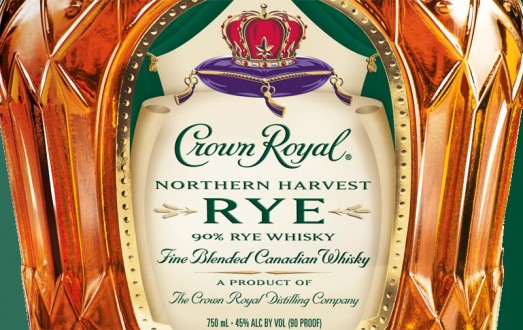So the news is out that Crown Royal’s Northern Harvest Rye was named the 2016 World Whisky of the Year by renowned whiskey writer Jim Murray. This news will most definitely affect sales for Crown Royal, but it may affect a bit more. Rye whiskey is making a comeback all over North America!
Let’s be clear that the term “rye” does not carry the same definition in Canada as it does in the U.S. We know rye whiskey, here in America, to mean that at least 51% of the mashbill is made of rye grains. Original styles of rye whiskey grew out of Pennsylvania and Maryland and were crafted based upon which surplus grains farmers from those regions accumulated after their harvests. In Canada, the original style of whiskey produced there was made of wheat. Early in Canada’s history, the settlers preferred rum, but as settlers moved west, grain became the substitute for distilling. To put it simply, the further from the ocean you got, the less likely you’d be able to get a hold of molasses coming form the Caribbean to make rum, so you had to use what you had. That meant wheat, which they had in abundance. The English and German settlers later began adding rye flour to their mash in small amounts and that style, which grew in popularity, came to be called “rye” whisky. The fact that there wasn’t all that much rye wasn’t an issue. Rye is what it would always be called.
Now Canada has its own whisky heritage and the fruits of its whisky producing labors have always been enjoyed by the United States. Since the Civil War (That’s right! It’s been that long!) Canadian whisky had been the best selling whiskey in our country. It wasn’t until 2010 that our native bourbon became the best seller on our own soil. America buys about 75% of what Canada makes.
If we just talk about Crown Royal, the distillery produces about 10 different brand variations and ages about 2 million barrels in 46 warehouses. Their products are all distilled in their Gimli plant now owned by Diageo. (The Seagrams plant in Waterloo was closed in 1992.) One single distillery produces all of their products. It is an incredibly impressive operation. (A survivor of the Canadian whisky legacy in the U.S. can be seen in the large plant in Lawrenceburg, Indiana known as MGP, Indiana. Many whiskey enthusiasts in the U.S. can name quite a few delicious whiskeys that are sourced from that location…) When the whisky is produced, each grain type is milled, mashed, fermented, distilled, and matured separately, and only then mingled together as mature whisky(with a few exceptions). A base whisky (grain whiskies distilled at higher alcohol levels and aged in used barrels) are then blended with “flavouring whiskies” (whiskies distilled at lower alcohol levels and aged in new or lightly used barrels).
The specific whisky that won the World Whisky of the Year accolades is 90% rye whisky. It’s a real rye (not just a dash of rye as tradition might design it). In Canadian terms that means that 90% of the contents have been distilled and aged as 100% rye and then blended with “other aged whiskies”. Whether this whisky deserves the attention is for the drinker to decide. I’m sure Jim Murray did his job to sell a few bottles for Crown Royal…I know I bought a bottle…

